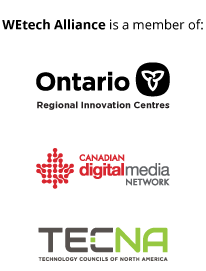By: Maurice Marwood, WEtech Volunteer Mentor and President and Principal at MMARCO International Services Inc.
Some have argued that entrepreneurs are born, not made; however, after 40 years in the business world I have come to believe that any organization can stimulate creativity and entrepreneurialism provided it has the correct type and style of leadership. To develop an entrepreneurial organization, leaders must abandon their strict go-it-alone focus on the internal fortunes of the company and instead pursue strategies based on the competitive environment and broader business trends. This is because innovation in a business enterprise must represent value, and therefore, must always be market-focused rather than product-focused.
Too many organizations inadvertently stifle creative entrepreneurial activity by overlooking the critical factors necessary to stimulate creativity. Follow these guidelines and you will become a successful leader of a creative entrepreneurial organization.
- Many studies have confirmed a strong link between intelligence and creativity. In fact, I believe intelligence is the single best indicator of creativity, so the first step is to hire the best and the smartest people you can find. Develop a process to objectively distinguish the A-players from the B-players and pay what it takes to attract A-players.
- Periodically inject new blood into the organization. Fight the urge to fill the organization only with bland conventional types that fit the traditional corporate mold. Look for new blood that has already demonstrated creativity and has a reputation for challenging the status quo. Do not buy into the myth that only certain types of people are creative. Eschew an egalitarian culture.
- Be flexible with respect to dress code, work times, reporting relationships. Avoid rigid symmetrical organization charts and de-emphasize the “chain of command.” Give creative people as much control as possible over their environment.
- Encourage interdepartmental communication, cooperation and cross-training; however, avoid too much job movement so as not to lose the benefits that accrues from becoming immersed in a body of ideas. Simultaneously allow time for random thought that comes from solitude; creative people often do their best thinking alone. Usually, major creative ideas are preceded by periods of preoccupation and obsession.
- Encourage questions and especially meandering open-ended questions that may seem irrelevant at the time based on a meeting agenda that may be too-rigid. Tolerate fuzzy-thinking manifested as gut-feelings, intuition and hunches—they can often stimulate creative solutions.
- During problem-solving situations where creativity is expected, and perhaps required, do not demand too much documentation, cost estimates and deadlines. Let the ideas develop and evolve. Avoid subjecting them to “reality tests,” especially in the early stages before the ideas have been tested within the work team. Creative people are often their own worst critics and it is important to avoid additional strain and anxiety by demanding premature formal status reports.
- Encourage outside education; develop a continuous learning environment. Support professional memberships and participation in association meetings and publications. Avoid policies that insist that all new knowledge compliment old knowledge.
- Creative people often feel vulnerable when developing new ideas. It comes from the constant risk of failure. Thus, it is important to always offer reassurance and communicate that you have no fear of the unknown. Monitor progress discreetly and do whatever you can to mitigate their anxiety and self-doubt. Praise new ideas even before they prove successful, and always give credit where credit is due when ideas do prove successful. Ensure that the top officers of the organization are aware of the contributions made by creative people and their ideas.
- Notwithstanding the above emphasis on individual tolerance and flexibility, it is important to have a well-defined Strategic Plan with high-level Critical Success Factors, Goals, and Objectives that clearly communicate where the organization is going and how it is going to get there. And when developing the Plan, be sure to give the people an opportunity to participate in decisions affecting their work. The Strategic Plan must be communicated to all levels. Each individual should have work plans that identify what’s expected of them, but equally important, they must know how their work contributes to the success of the organization.
- Perhaps most important of all, you, as the leader/manager, must constantly examine yourself. Seek candid feedback from others. Make sure you do not display an excessive need for control or demonstrate a fear of disharmony, complexity and ambiguity. Probe your own management style and avoid the tendency to be risk-averse; avoid making quick decisions. This is how you can be a creative role model.
“In the innovative organization, the first and most important job of management is to convert impractical, half-baked, and wild ideas into concrete innovative reality. In the innovative organization, top management sees it as its job to listen to ideas and to take them seriously. Top management, in the innovative organization, knows that new ideas are always “impractical.” It also knows that it takes a great many silly ideas to spawn one viable one, and that in the early stages there is no way of telling the silly idea from the stroke of genius.”
Peter F. Drucker



